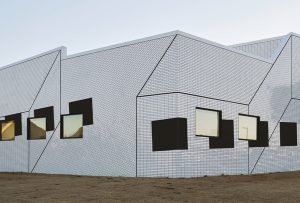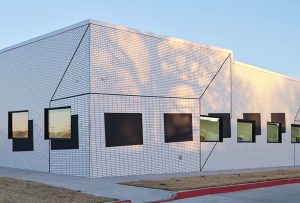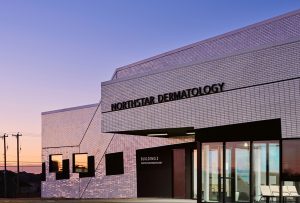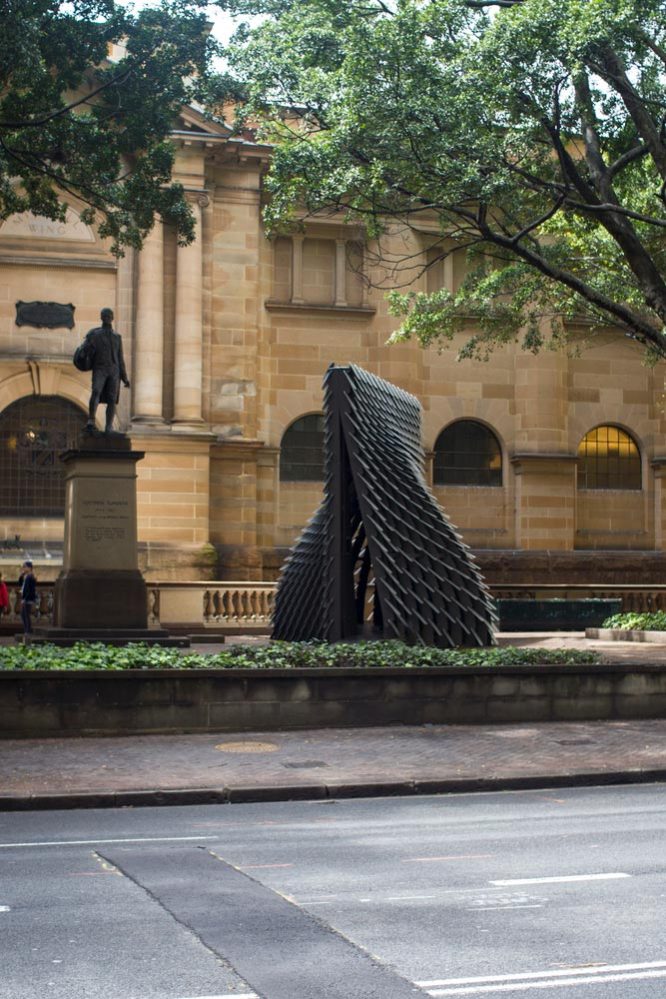
Northstar Medical Campus, a 24,000-square-foot medical office development located outside Fort Worth, Texas, was designed by AN.ONYMOUS. Three one-story medical office buildings, all designed by AN.ONYMOUS are arranged around a public plaza and surrounded by landscaped grounds on the three-acre medical campus. Building 2, a 9000-square-foot office building housing the Northstar Dermatology clinic, is the primary structure on the expansive site, which was completed in January 2022. The completion of the remaining two buildings, Building 1 and Building 3, is anticipated by 2024.
The project, through its novel application of simulation tools and representation techniques, challenges the conventions of the architectural design process, the planning and organization of medical office spaces, and the use of vernacular building materials and construction techniques. The outcome is a dynamic environment that offers a variety of visual and physical interactions within the building and with the architecture. The floor plan of Northstar Dermatology is divided into two overlapping rectangular areas that are offset and rotated relative to one another.

Each rectangular area contains a clinical zone with doctor’s offices, a nurse station, and several examination rooms. The clinical zones each have an embedded rotation that distorts their original square plan and aligns them with one another. This subtle rotation also transforms the interior’s square volumes into irregular octagonal ones, facilitating communication and circulation around the nurse stations.
The rotation occurs within each building and between the three buildings on campus, resulting in an interaction between the building volumes that form a pinwheel around the central plaza. The shared area between the two clinical zones on either side of the clinic is occupied by the central staff and administrative spaces. Within the clinical zones, spaces are further subdivided in concentric patterns, defining the circulation patterns and a system of visual communication and surveillance between doctors, nurses, and patients: the doctors’ offices in the centre overlooking the nurse stations, and the nurse stations on the peripheries facing the patient examination rooms.
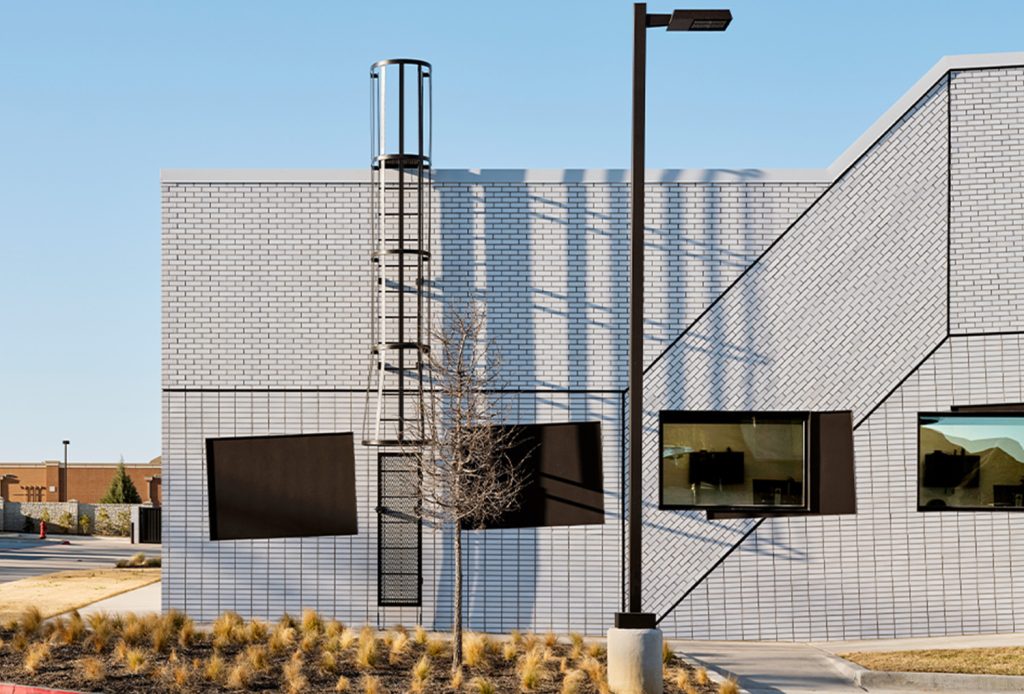
Utilizing a series of agent-based computer simulation software, such as Pedestrian Dynamics and AnyLogic, it was possible to simulate the specific movement and behaviour of doctors, nurses, patients, and staff in a digital environment in order to increase circulation efficiency and interaction between users within the space, instead of using the tools to test or validate an existing scheme, AN.ONYMOUS employed the software as a tool for experimental design.
The design firm monitored the performance by establishing the primary spaces in a digital model and simulating the movement of various healthcare users (patients, staff, doctors, and nurses) multiple times. It iteratively modified the floor plan to increase efficacy and decrease unwelcome obstructions or interactions. The final plan is the result of an iterative simulation process that not only allowed the designers to incorporate the experimental method into the architectural design process but also enabled them to create an office in which the circulation is better synchronized with the schedule and pattern of daily activities.
“In this way, the building, beyond a formal or aesthetic container, functions as a framework to improve the movement and interactions of various users in space,” says Marta Nowak, Co-Founder and Principal of AN.ONYMOUS.

The innovative approach of AN.ONYMOUS to the interior organization and layout of the clinic extends to the application of materials and construction techniques, in particular, the use of a thin brick system or brick veneer. The design office found a way to comply with the city of North Richland Hill’s requirement that all commercial buildings must have an exterior composed of at least 80% masonry. The glazed black and white brick facades of Northstar Dermatology are not structural but instead function as a form of orthographic representation, using control joints as lines, brick-veneer walls as surfaces, and “shadow” Exterior Insulation and Finish System (EIFS) areas as openings or cutouts. The final product reflects light and colour and, due to the hilltop location of the buildings, produces varying effects throughout the day. The thin brick system, when utilized with varied stacked and running bond patterns in horizontal and diagonal configurations, reveals the material’s symbolic quality as a faux brick.
“The exterior facades function as two-dimensional surfaces that attempt to represent, but never perfectly match, the interior’s logic. “By doing so,” explains Iman Ansari, Co-Founder and Principal of AN.ONYMOUS, “the project aims to expose the disjunction between the interior and exterior, the structure and the skin.”

The interior of Northstar Medical Campus finishes and flooring distinguish between the public (patient) and private (staff) spaces. The dark grey vinyl flooring of the public areas distinguishes them from the light grey vinyl flooring of the private areas, serving as wayfinding and signage to direct patients from the check-in and waiting room to the exam rooms and check-out areas. When the flooring defies the partitions and encroaches on another space, or when it disregards an edge and wraps around the wall, the two types of flooring expose the disparity between the original plan and the final layout of the clinic.
These overlaps and misalignments of flooring materials, particularly visible on corridor floors and walls where public and private zones meet, create the illusion of a “visual space” that differs slightly from the “physical space.” This visual effect makes the relatively narrow corridor appear larger, guides movement around the nurse stations and towards the exam rooms, and facilitates navigation and circulation throughout the office.

Project Info
Client: Northstar Dermatology – Northstar Medical Campus
Design Architect: AN.ONYMOUS
Principal Design Team: Iman Ansari, Marta Nowak, Gesthimani Roumpani, Maya Chandler, Chunhua Chiu, Luiza De Souza, Tingji Gavin Guo, Yanrong Yan, Lexi Arnett-Sutherland, Kaitlin Khammanh.
Architect of Record: Guide Architecture
Landscape Architect: Belle Firma
Structural Engineer: Armstrong Douglass
MEP Engineer: Choice Engineering
Civil Engineer: Clay Moore Engineering
General Contractor: Z Constructors
Millwork: Central Millwork
Photographer: Leonid Furmansky








